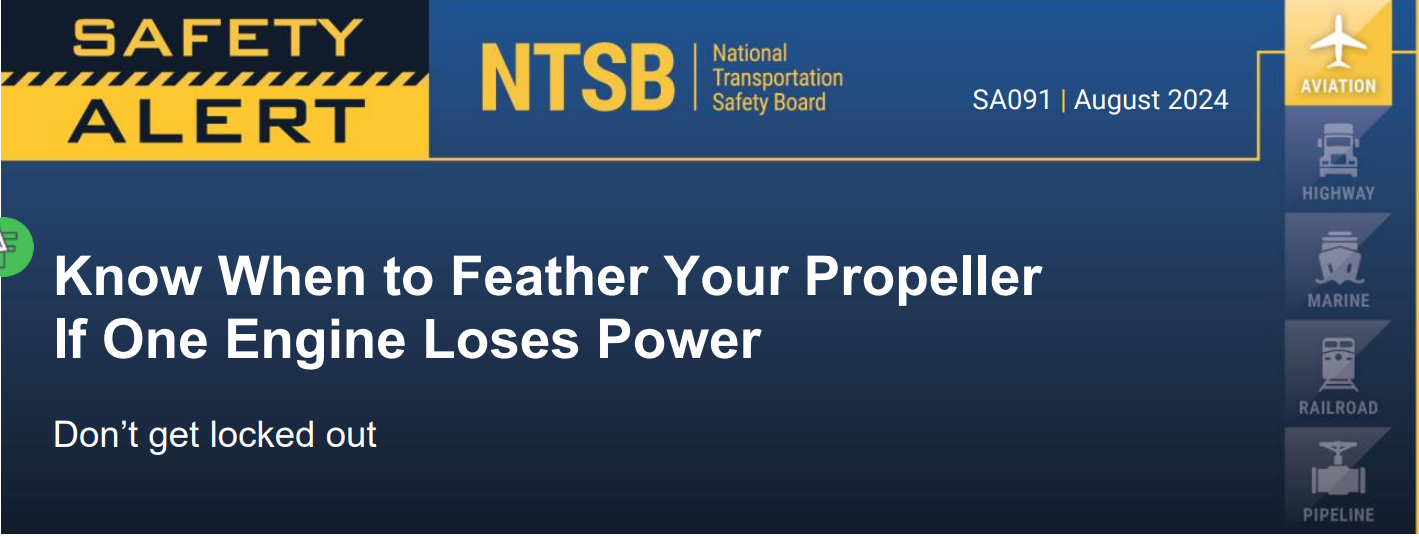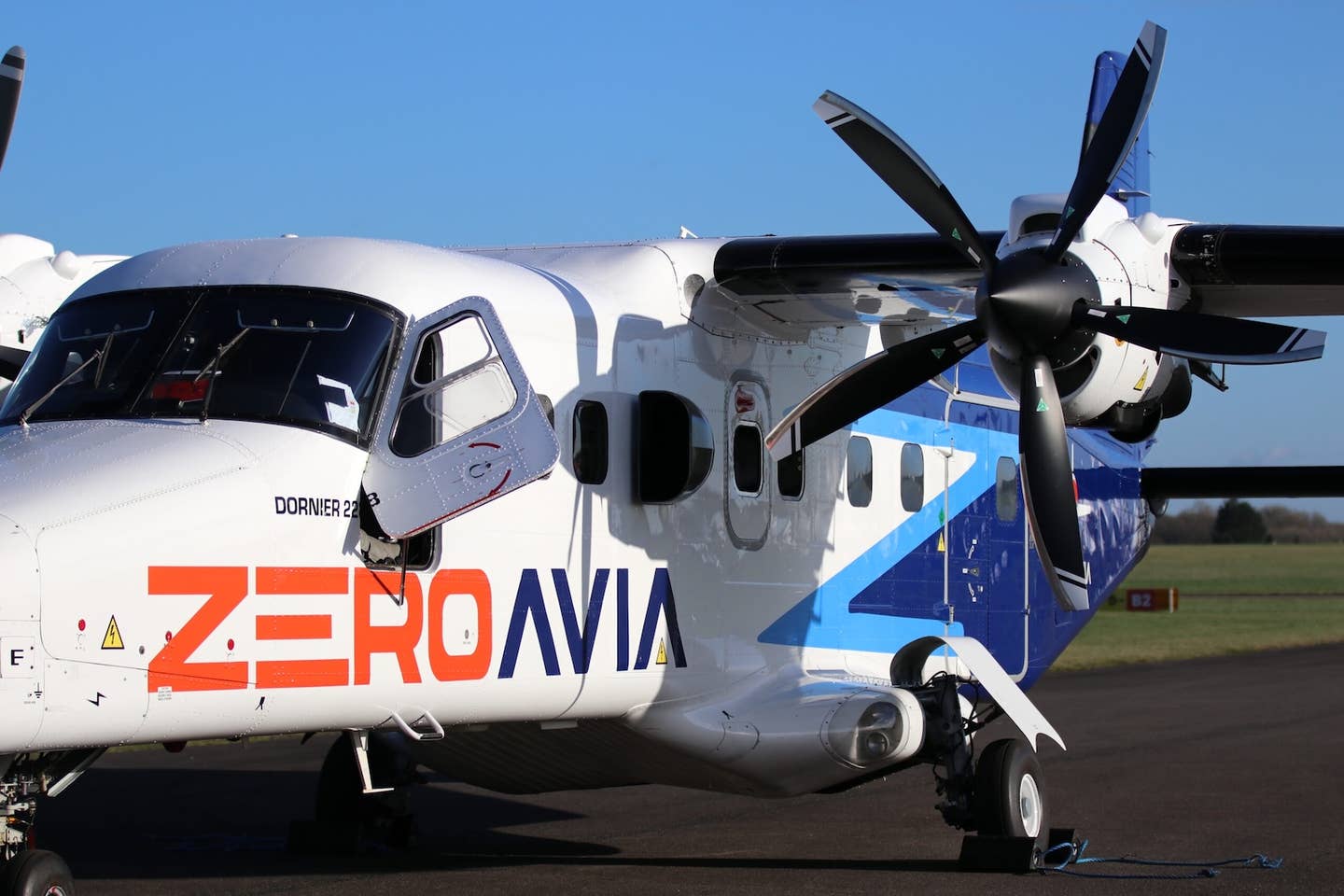NTSB Issues Safety Alert For Multi-Engine Pilots Regarding Partial Engine Failures
The National Transportation Safety Board (NTSB) issued a new safety alert for multi-engine pilots facing partial engine failure. The alert emphasizes the importance of promptly feathering the affected engine’s propeller…

The National Transportation Safety Board (NTSB) issued a new safety alert for multi-engine pilots facing partial engine failure. The alert emphasizes the importance of promptly feathering the affected engine’s propeller before its rpm drops below the critical threshold where start locks engage.
SA-091 notes that current pilot training and checklists for multi-engine piston airplanes mainly focus on total engine failures and don't adequately cover partial engine power loss. The NTSB warns this gap in training can lead to improper management and increased risk of loss of control during single-engine operations.
While the NTSB notes that feathering the propeller of an inoperative engine is a recommended practice, once the propeller rpm falls below the speed at which the start lock engages, the pilot will be unable to feather it. Agency officials say the crucial threshold to secure an inoperative motor and feather the affected propeller generally ranges from 1,000 to 800 rpm but differs depending on make and model. Some manufacturers list the information in their propeller owner’s manual, while others do not.
SA-091 also pointed out several related accidents that might have been avoided if pilots had feathered the inoperative engine before the rpm dropped below the critical speed. The NTSB urges pilots to familiarize themselves with the correct procedures for feathering propellers in their aircraft.






